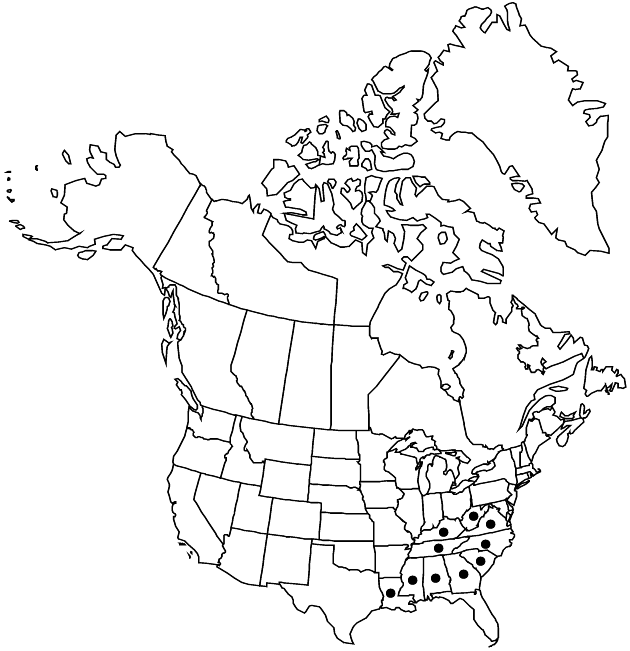Silphium asteriscus var. latifolium
Novon 14: 276. 2004.
Endemic
Basionym: Silphium trifoliatum var. latifolium A. Gray in A. Gray et al, Syn. Fl. N. Amer. 1(2): 241. 1884
Synonyms: Silphium confertifolium Small Silphium glabrum Eggert
Plants 50–150 cm. Leaves: basal persistent or caducous; cauline mostly opposite; faces glabrous or sparsely hairy. Paleae puberulent. Ray-florets 12–17. Disc-florets 35–130.
Phenology: Flowering mid summer–early fall.
Habitat: Fields, roadsides, disturbed areas
Elevation: 100–900 m
Distribution
Loading map...

Ala., Ga., Ky., La., Miss., N.C., S.C., Tenn., Va., W.Va.
Discussion
Silphium confertifolium has persistent basal leaves and a diminutive stature that is due to environmental variation; it is best included in S. asteriscus var. latifolium.
Selected References
None.
Lower Taxa
None.
"broader" is not a number.
... more about "Silphium asteriscus var. latifolium"
introrse +
connate +
herbaceous +
acute;acuminate +
scarious +
absent +
hirsute +
papillate +
bristlelike +
continuous +
simple +
elliptic +
ovate;falcate;ovate;falcate;lanceolate +
winged;ribbed;winged;ribbed +
1;15 +
stigmatic +
absent +
opposite +
zygomorphic +
yellow +
winged +
dimorphic +
staminate +
staminate +
straight +
distinct +
proximal +
1;5 +
bisexual +
dispersed +
singly +
discoid +
indeterminate +
surrounding +
campanulate;hemispheric +
deltate +
2-carpellate +
inferior +
attached +
anatropous +
puberulent +
persistent +
fragile +
falling +
absent +
tough +
thick +
absent +
connate +
persistent +
distinct +
falling +
Novon +
2004 +
pistillate +
absent +
fertile +
paleate +
flat;slightly convex +
fibrous +
exalbuminous +
modifed +
2;3 +
Endemic +
alternate +
branched +
erect +
terete +
continuous +
2-branched +
papillate +
Silphium asteriscus var. latifolium +
Silphium asteriscus +
variety +
cylindric +
narrow +
much shorter +
cylindric +
shorter to longer than campanulate +
perennial +